So how is life in Cambodia in this bustling tourist town? There is a lot more to it than just the temples and the infamous Pub Street. The town sits on the edge of Tonle Sap, the largest lake in Asia – the boundaries of which change with the seasons and which is a UNESCO biosphere reserve although it is under threat as increasing numbers of dams in the Mekong are affecting the flow of water into Tonle Sap.
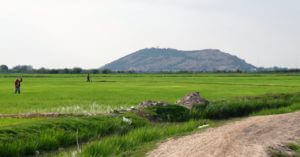
The surrounding area is part of the Cambodian floodplain and ideal for rice, maize and sugar cane production. When you drive out of town paddy fields with sparse palm trees dotted in between extend as far as the eye can see. When I talk to my students, all of their grandparents were farmers and grew rice. Fishing is also a very important activity and fish amok the traditional Cambodian national dish.
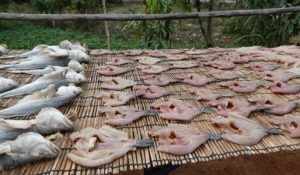
In the past 20 years of peace, many people have returned to the towns and education has begun to trickle down through the population so that some of my students’ parents are teachers or run their own businesses and my students harbour ambitions to be doctors, teachers and accountants.
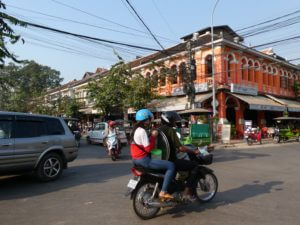
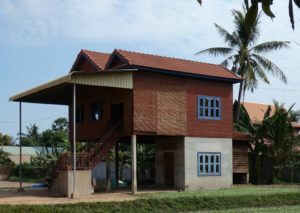
In the town there is extensive ribbon development along the key roads and the place appears to be one huge building site. There are elections in July 2018 for the National Assembly and some of this activity can be put down to an attempt to win votes. The town is an amazing mixture of old and new, with modern hotels rubbing shoulders with the traditional wooden Cambodian houses and French colonial buildings.

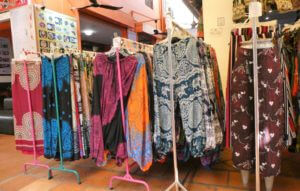
There are a number of markets ranging from those which are simply catering to the tourists selling baggy printed trousers and “I love Angkor Wat” T-shirts to the locals’ markets where there are few tourists and not a word of English is spoken. Phsar Leu is the biggest market and is for the locals – it sells everything from meat and fish to gold jewellery and fly spray. There is no shortage of fresh fruit and vegetables – the market gardens are all around the outskirts of town and the locals bring in their produce every day. The fruit is a wonderful tropical extravaganza with mangoes, pineapples, papaya, rambutan, dragon fruit and tamarind all making a fabulous display. I feel that my diet should be extremely healthy here and there is no excuse for gaining an ounce!
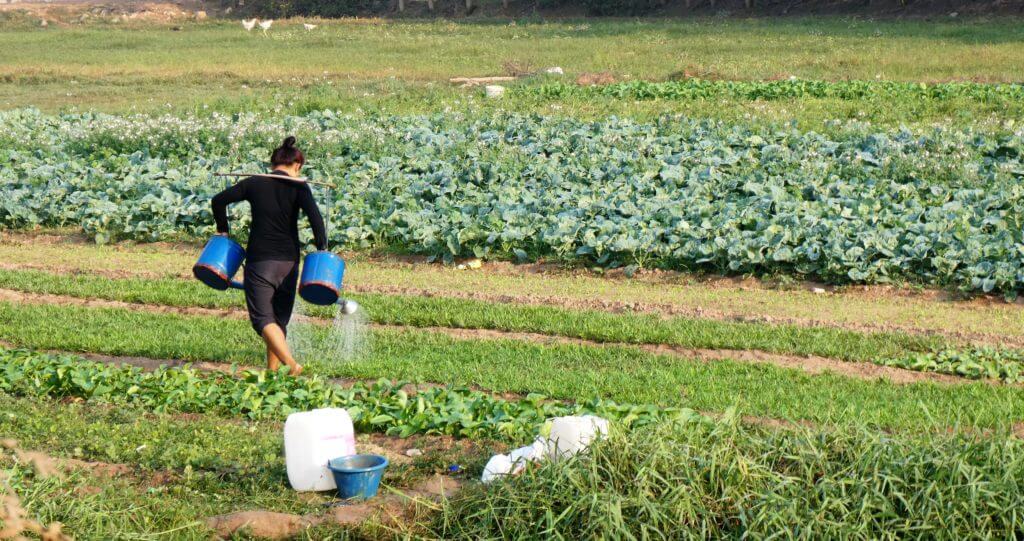
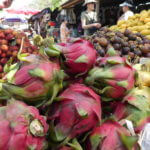
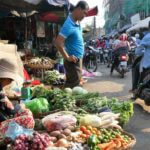
The Khmer people are very engaging – they have a great laugh and you wonder how a people who have been through so much in recent times have managed to keep a sense of humour. Even though my Khmer is limited to a very few words, just listening to the girls chattering while I have my toenails painted is a delight. No fancy salon here; the girls squat on the floor while they soak my feet in a tiny plastic bowl and the towel has definitely seen better days. They help me practice my “Hello, how are you?” in Khmer and giggle at my accent.
I have to say with a degree of relief in my voice that the European toilet is the norm here – even though I am working hard at the yoga classes, my squatting ability is still not ideal. However, the sign on this toilet door says it all, once a squatter…???
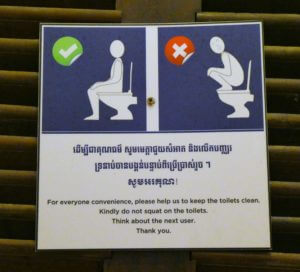
©Copyright overthehils.com 2018


As always I so enjoyed your most recent blog, it brought back memories of our trip to Siem Reap and in particular Phsar Leu market. It is the only market where I have seen a motor bike driving down the aisles!
Glad you are enjoying the experience.
Lynda xx
Yes – the markets are really fascinating and I could spend days wandering around them.Also found the Bayon Pastry School coffee shop which you talked about – that is a lovely place to go and sit and chill after a long bike ride! xx